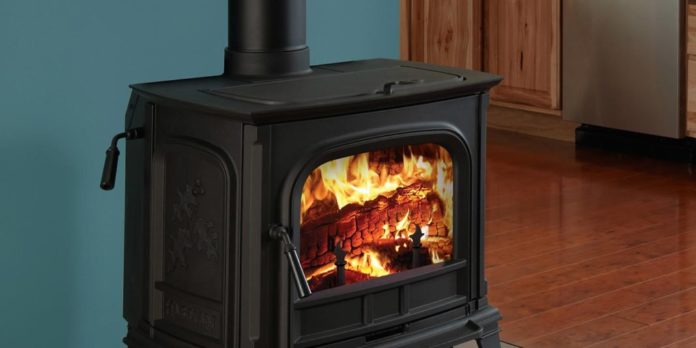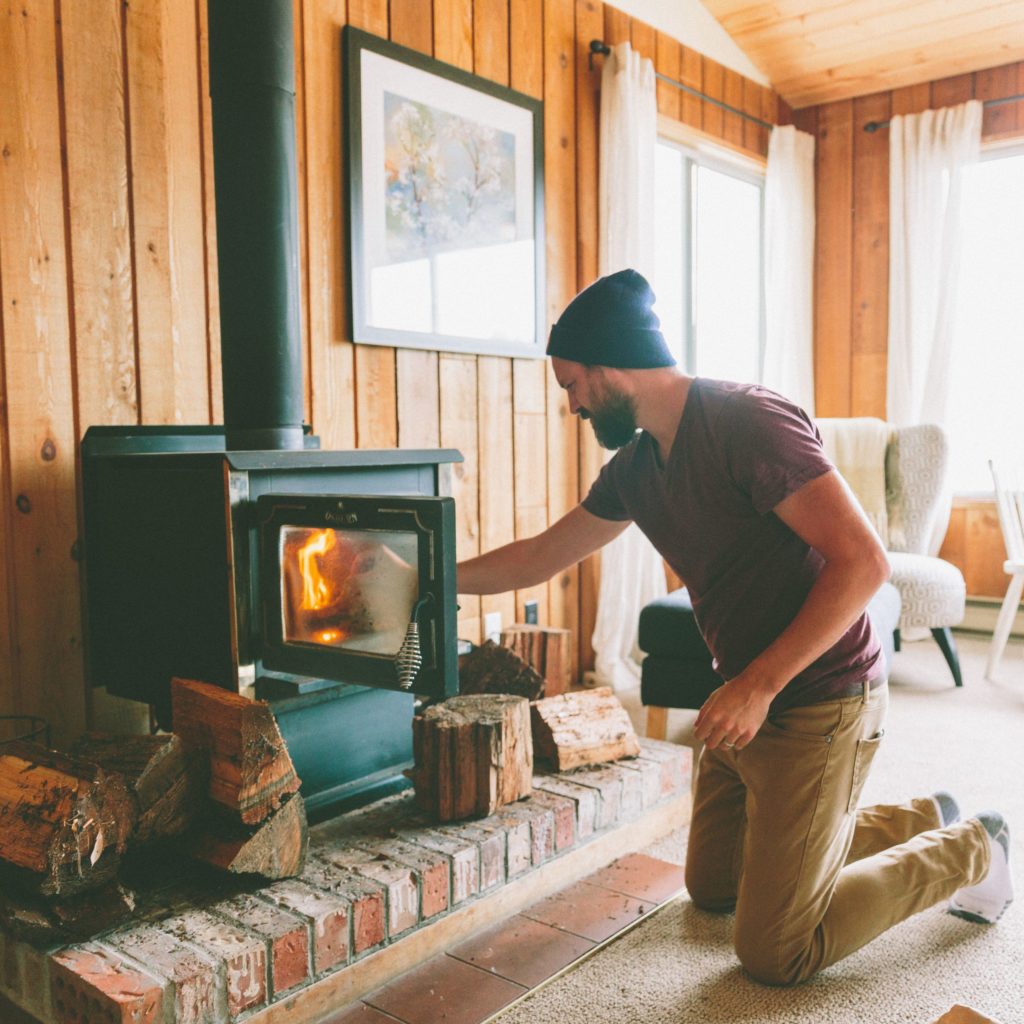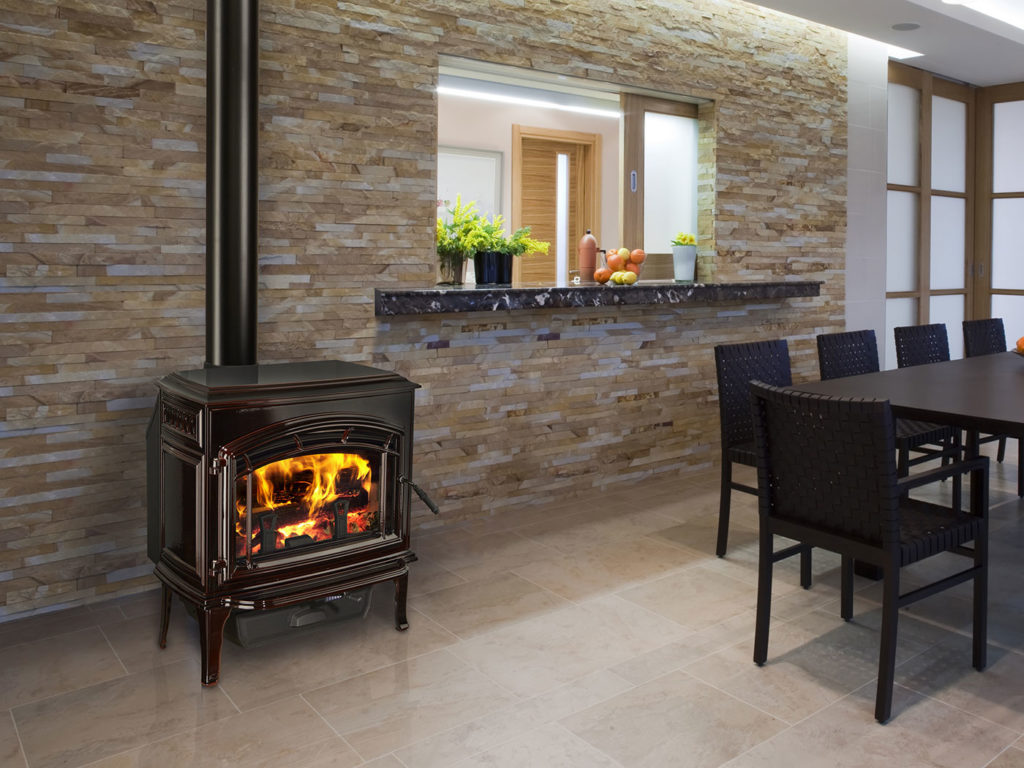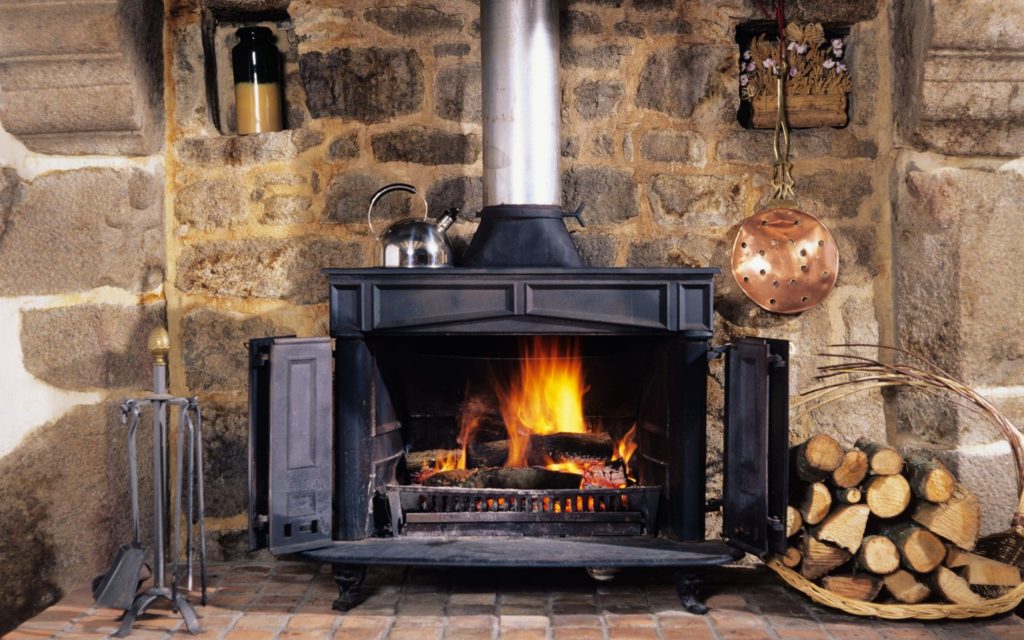
When it comes to heating your home, you have plenty of options. In addition to central HVAC systems that use furnaces to evenly disperse heat into the home, you have the choice of utilizing a more traditional heat source – like a wood stove.
What is a Wood Stove?
Million of American households currently rely on wood burning stoves to generate heat. And while the technology and design has changed over the years, it’s the same classic design that allows these stoves to generate massive amounts of heat with minimal energy consumption and little carbon production.

“As a wood stove heats up, it radiates heat through the walls and top of the stove. This radiant heat warms the immediate area and can be carried into other parts of the home via the home’s natural air flow. Electric or convection-powered fans can help circulate this heat to warm a larger area,” LEED accredited builder Emily Beach explains. “Some wood stoves combine radiant and convection heat into a single device using a convection chamber, which wraps around the firebox. This convection chamber draws cool air in, then warms it before circulating it back through the room.”
Starting in 1990, the EPA began certifying wood stoves to ensure greater efficiency than older stoves. This means today’s stoves put off more heat, while relying on less wood – a win-win situation for everyone.
4 Reasons to Use a Wood Stove
With many Americans turning to the convenience of a gas fireplace – or simply relying on their home’s HVAC system to maintain comfortable temperatures – why should you invest in a one? Well, there are a few specific reasons:

1. Eco-Friendly
When you get your heat from a utility company, you’re using finite resources like oil or coal. This leaves behind a significant carbon footprint and, contrary to popular belief, isn’t infinitely sustainable. With a wood stove, you don’t have to worry about the impact you’re having on the environment.
Wood is a renewable resource and it only releases a tiny amount of smoke when properly dried prior to burning. It’s considered carbon-neutral. In other words, when the wood burns, no additional carbon dioxide is added to the environment. (In its natural state, a tree absorbs the carbon dioxide that’s in the atmosphere. During the combustion process, balance is maintained.) This means the carbon footprint left behind by a wood stove isn’t any greater than one left by a fallen log that rots in the wilderness.
2. Cost-Effective
Used responsibly, a wood stove is far more cost-effective than a heating source that relies on other materials. Per BTU, wood costs significantly less than oil, gas, or electricity. And when zone heating is used in the home, homeowners can reasonably expect to save hundreds of dollars per year on their utility bills.

3. Heat Dispersion
The heat put off by a wood stove is much hotter and more direct than the heat most homeowners get from an HVAC system. And depending on the type of stove you get, heat can be maintained without actively burning.
“Cast iron models are often more expensive than plate steel, but they come in far more color and style options,” eFireplaceStore.com explains. “The stove body also absorbs heat and continues to give off warmth hours after the fire has gone out.
Wood stoves also allow for greater control of where heat is utilized. By placing it in central areas of the home, homeowners can heat the rooms they use without wasting heat on rooms they don’t.
4. Versatility
One of the frequently overlooked benefits of wood stoves is their ability to double as cooking appliances. With the right type of stove, you can actually do all of the same things you’d accomplish with an oven and a stovetop. The top surface is perfect for warming food, frying food, and even boiling water. With an added shelf, the inside can bake and broil.
Adding it All Up
The modern homeowner has plenty of choices for heating the home, but the wood stove remains one of the most effective and efficient options. Make sure you consider all of the benefits it yields before making a final decision. You’ll like what you discover.














